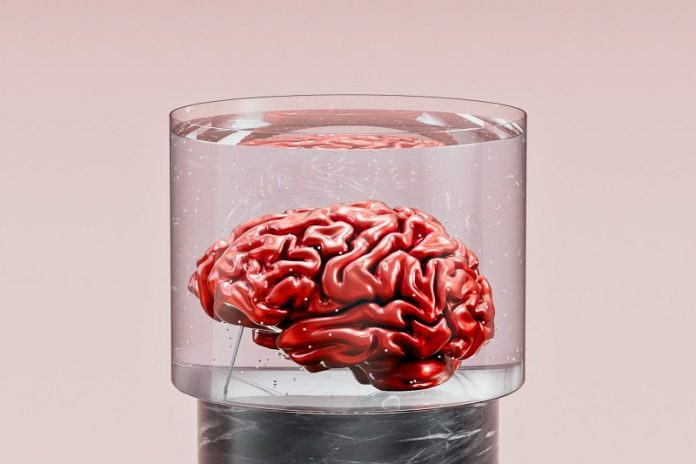
For many years, scientists believed that the left and right sides of the body were controlled by the opposite sides of the brain.
If you moved your right hand, it was thought that the left side of your brain was responsible, and vice versa.
This idea also suggested that being right-handed or left-handed came from one side of the brain being better at controlling movement than the other.
However, nearly 30 years ago, a researcher named Robert Sainburg from Penn State proposed a different idea, called the complementary dominance hypothesis.
He suggested that both sides of the brain work together to control movements on both sides of the body, with each side playing a different role. This idea has slowly gained acceptance and is now shaping new treatments for people recovering from strokes.
Sainburg and his team have spent decades studying how the brain controls movement. Their research, along with work from other scientists, has led to a better understanding of how the brain operates.
This new knowledge is now being used to improve rehabilitation for stroke survivors, helping them regain movement and strength in both sides of their bodies.
How Strokes Affect Movement
A stroke happens when blood flow to part of the brain is interrupted, either because of a blockage or a burst blood vessel.
When this happens, the part of the brain responsible for controlling movement can be damaged, causing problems with muscle control and communication between the brain and body. This often results in weakness or even paralysis on one side of the body.
Traditionally, doctors believed that only the side of the body opposite the stroke was affected. For example, if the stroke occurred in the left side of the brain, the right side of the body would have movement problems.
Rehabilitation focused on helping patients regain as much function as possible on that weaker side, with less attention given to the “unaffected” side of the body.
However, Sainburg’s research has shown that this traditional view is incomplete. In fact, both sides of the body can be affected by a stroke, even if the problems are not as obvious on the less-affected side. This new understanding is now guiding changes in stroke rehabilitation.
New Approaches to Stroke Rehabilitation
Sainburg’s complementary dominance hypothesis challenges the long-standing belief that one side of the body is “good” and the other is “bad.” Instead, his research shows that each side of the brain has its own strengths when it comes to controlling movement.
For example, the dominant side of the brain—usually the left side for right-handed people—is better at making smooth and accurate movements, while the non-dominant side is better at stabilizing movements in tricky situations, like when someone is unexpectedly pushed.
This idea has important implications for stroke recovery. If both sides of the brain contribute to movement, then both sides of the body need to be treated during rehabilitation. Sainburg and his colleagues are working on new therapies that address movement problems on both sides of the body.
One of the key findings from Sainburg’s research is that the less-affected arm after a stroke can still have deficits. For example, if a stroke damages the left side of the brain, the right arm might struggle with accurate movements.
Similarly, if the right side of the brain is damaged, the left arm might have trouble stopping at the right location when reaching for an object.
To help stroke survivors regain better control of their less-affected arm, Sainburg’s team developed specific rehabilitation activities. In a 2020 pilot study, stroke survivors played virtual games designed to improve their movements.
For example, people who had a stroke on the left side of the brain played a virtual air hockey game with their left hand to improve their ability to make smooth, accurate movements.
Those with right-brain strokes played a maze-tracing game with their right hand to improve their ability to stop their hand at the correct location.
After three weeks of training, participants showed significant improvement in hand dexterity, as measured by a common test used for stroke patients. Importantly, they retained these improvements even six weeks after the training ended.
A Step Toward Better Treatment
Sainburg and his team’s work is now being tested in large clinical trials to determine how effective these new therapies are for stroke survivors.
Preliminary results from trials conducted between 2018 and 2024 are promising, and they could lead to significant improvements in how stroke rehabilitation is handled.
The goal is to create therapies that help stroke survivors regain more movement and strength in both sides of their bodies, allowing them to return to daily activities that are important to them.
This research could have a major impact on the lives of the hundreds of thousands of people who experience strokes each year.
Stroke is a leading cause of long-term disability, and many survivors never fully recover. But with new insights into how both sides of the brain control movement, researchers like Sainburg are hopeful that better rehabilitation strategies will lead to more complete recoveries for stroke survivors.
The future of stroke treatment may involve not only retraining the weaker side of the body, but also helping the less-affected side regain full function.
If you care about stroke, please read studies about how to eat to prevent stroke, and diets high in flavonoids could help reduce stroke risk.
For more information about health, please see recent studies about how Mediterranean diet could protect your brain health, and wild blueberries can benefit your heart and brain.
The research findings can be found in The Journal of Physiology.
Copyright © 2024 Knowridge Science Report. All rights reserved.



